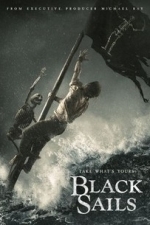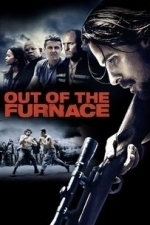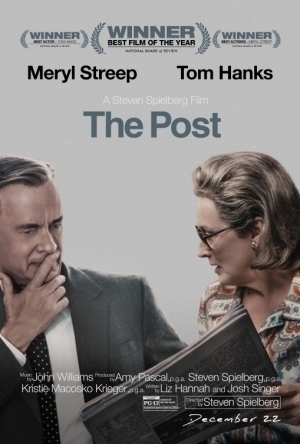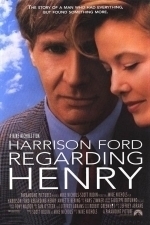Connor Sheffield (293 KP) rated Black Sails - Season 2 in TV
Jun 3, 2017
These points only become more evident in the second season. My favourite character has to be the man who has a larger role in the book (Treasure Island), and that man is John Silver. Luke Arnold is charming as John Silver, and the character himself is very cunning which makes for great entertainment as he constantly finds new ways for Flint's Crew, and other characters in Nassau, to NEED him alive so that he can survive any and all scenario's. Whether it's his way with words or his cunning ideas that he knows should work (and often do) that makes his character so impressive and brilliant.
The drama has always been gripping in this show, and the action is always leaving me on the edge of my seat because the twists and turns in this show more often than not, catch you off guard when written suddenly. Some of the twists are more obvious than others, they have a build up that make you sit there saying/thinking "They've done this..." or "This is going to happen..." Etc. But it doesn't make the show any less entertaining.
The conflict between Vane and Flint is always entertaining. Whilst Flint is the most feared among the pirates, Vane is certainly not far behind, and his stature towers above Flint's making him mean looking and not someone you'd want to mess with. Flint has the brains, Vane has the brawn and together they are a brilliant rivalry, even when they have to come together for a single purpose. They respect each other, and it shows, but they are both too proud to tell one another that they would be better working with one another rather than against.
The cast are all perfect to their roles, and the characters are all brilliantly written to for their purpose in the show.
Gareth von Kallenbach (980 KP) rated Out of the Furnace (2013) in Movies
Aug 6, 2019
The last blockbusters of the year. It’s also the time when they release what I like to call ‘hidden gems’ of the year. The ones you never see coming or fly under the radar and don’t get the credit they deserve.
Today’s selection for your consideration, definitely qualifies as one of those films the ‘flies under the radar’ but is definitely one worthy of recognition and more than worthy to be seen.
The thriller “Out Of The Furnace” will hit theaters on Friday December 6th. Starring Christian Bale, Woody Harrelson, Zoe Saldana, Willem Dafoe, Forrest Whitaker, Casey Affleck, Sam Shepard and directed by Scoot Cooper ‘Out Of The Furnace’ tells the story of Russell Blaze (Bale) and Rodney (Affleck).
Two blue collar brothers from Pennsylvania who, along with their Uncle Red (Shepard), care for their sick father. Russell works at the local steel mill until an impossible string of random events sends him to prison. Meanwhile, Rodney, a recently returned Iraqi war veteran unable to find work is lured into less than legal means of earning income in order to help provide for the family. Upon his release, Russell’s life takes an even more dramatic turn as he is forced to choose between justice for his brother or his freedom.
‘Out Of The Furnace’ is not exactly a holiday film. It’s a tale of revenge. It’s a story that follows a hard-working American family who by no fault of their own, were overcome come by outside elements that they could not be prepared for or never anticipate.
It’s a tragedy reminiscent of Shakespeare combined with a powerful cast.
It’s methodical, shocking, and heartbreaking. Not for the faint of heart. It shows that even in the end, no matter what choices you have standing in the shoes of Russell Blaze you can still lose. The movie starts off slow and certain aspects like the fate of Uncle Red get lost in the mix but all in all I’d say this movie is definitely one worth seeing and I wouldn’t be surprised in the least if it doesn’t get talked up for a few awards.

The Best of Miranda: Favourite Episodes Plus Added Treats - Such Fun!
Book
Well hello to you, Dear Book Peruser and thank you for your kind interest in my book o'Miranda. Here...

If Hitler Comes: A Cautionary Tale
Christopher Serpell and Douglas Brown
Book
This novel was first published by Faber in August 1940 under the title, "The Loss of Eden". It was...

The Gift of Life: Behind the Scenes of Donor Organ Retrieval
Book
'Organ transplants are a very controversial and unique area of medicine. Those of us who work as...
Gareth von Kallenbach (980 KP) rated The Post (2017) in Movies
Jul 11, 2019
When you hear the high caliber names such as Hanks, Streep, Speilberg, you can almost guarantee a top notch film with unbelievable emphasis on character development. They definitely did not disappoint! The Post works as a history lesson. Not only does it portray the events that took place with such thorough details, it exemplifies the relationship between not only a journalist and their source, but also the personal struggle between the editor, the owner of the newspaper, their friends who hold major positions within the government, and the moral obligation to at least get the truth out to the public.
The set design, the costume design, the characters’ mannerisms are flawless. Even the way social interaction was demonstrated between men and women. Women’s role is in the home, cooking, cleaning, and entertaining. Something so simple as the use of a rotary phone played such a nostalgic role. I can’t say enough about the wonderful acting skills of both Streep and Hanks. I suspect one or both with be receiving some serious accolades during awards season. Streep and Hanks both shine throughout the entire film. They both did a great job at relaying the emotions and the turmoil these characters faced.
Many lines throughout the movie–“if we don’t hold them accountable, than who will?”–ring true to a lot of the issues affecting us today.

Anti-Radares
Utilities and Travel
App
ADIOS A LAS MULTAS ¿Vas de viaje? Esta es tu app PRECIO DE PROMOCION -65% Tiempo Limitado Ahora...

PlanGrid Construction Software
Business and Productivity
App
PlanGrid is the #1 construction app. Use PlanGrid to reduce repeated trips to the trailer, minimize...
Bob Mann (459 KP) rated Table 19 (2017) in Movies
Sep 29, 2021
It all starts so promisingly, with a scene of Anna Kendrick (“The Accountant“, who can be a very good actress) rejecting a wedding invitation; then accepting it; then burning it; then blowing it out; then posting it. I laughed. This was a rarity. There are about five more smile-worthy moments in the movie, most of which are delivered by Stephen Merchant.
Anna plays Eloise who was SUPPOSED to be maid-of-honour at her best friend’s wedding, but then broke up – messily – with her brother (the best man). She stubbornly attends the wedding in a posh hotel and finds herself on “Table 19” – a socially unfavourable location, full of a bunch of misfits that everyone expected to say “no” but didn’t; a molly-coddled and awkward teen (Tony Revolori, “Spider-man: Homecoming“) with the single goal of getting laid; “The Kepps” – a bickering married couple (Lisa Kudrow (“The Girl on the Train“, “Friends”) and Craig Robinson (“Hot Tub Time Machine”)); a convicted fraudster serving his sentence in an open prison ( Stephen Merchant, “Logan“) and a druggie former nanny of the bride (June Squibb, “In and Out”).
The fundamental problem with the movie is that Jeffrey Blitz’s script (he also directs) is not only not very funny, but it is so fundamentally focused on the greedy and needy nature of the table’s American reprobates that at every turn it leaves a bad taste in the mouth. Their motives are all utterly selfish and there’s an “if we get away with it, then that’s fine” attitude that pervades the plot.
The nadir for me happens when – after trashing (albeit accidently) a key part of the wedding they are attending, they cover their selfish backsides by (deliberately) trashing the same key part of another wedding going on in the same hotel.
This is kind of positioned as a “revenge” sort of thing, but (in analysis) no wrong seems to have actually been done: its just another misunderstanding of the self-obsessed Eloise.
The Kepp’s story is also sad and selfish rather than comedic, and the resolution of this (and in fact all of the other sub-stories) for a nicely gift-wrapped ending is just saccharine and vomit-inducing.
This is a wedding present that should have come with a label in big red writing: “DO NOT OPEN“.
Darren (1599 KP) rated Regarding Henry (1991) in Movies
Jul 25, 2019
Henry’s life is turned upside down when he is shot in a head, leaving him with no memory, speech or mobility. Bradley (Nunn) his physical Therapist comes into this life to help teach him again as Sarah must adapt without the income that Henry once bought in. with Henry’s recovery going well, can a return home make him better, both in health and in his own personal standards of treating people.
Thoughts on Regarding Henry
Characters – Henry is a lawyer, he closes cases with ease, but doesn’t seem to be close to his family or friends, busy working for the most part of his life. When he gets shot in the head, he must learn to recover and learn everything again, this shows Henry a new way to look at life which will make him a better person. Sarah is the wife of Henry, she supports him through the tough time knowing he will remember his life in time. Bradley is the physical therapist that helps Henry break the first hurdles in his recovery.
Performances – Harrison Ford gives a performance we wouldn’t know him for, he does well for the most part, but there are moments he doesn’t hit the performance like he should. Annette Bening is good in her role through the film with Bill Nunn adding the extra moments needed in this film.
Story – The story here plays out like a fantasy film in places, we have one man that has a lift changing injury that makes him see life in a different point of view. We see his recovery process which shows us how the people in his life can change their opinions on one person after an injury impairs their abilities. This does tell the recovery process and clearly shows the changes Henry goes though which are good to see through the film.
Romance – The romance of the film is standard it shows the life both Henry and Sarah have had before and after the injury.
Settings – The film is set mostly in New York city, which is great as I always say, which helps show how the busy life of Henry affected his life.
Scene of the Movie – The rehab.
That Moment That Annoyed Me – Moments Ford doesn’t hit the injury the way you believe.
Final Thoughts – This is a good drama that shows how injuries can affect lives, not just the person that is injured but the people close to them too.
Overall: Good Film which shows Ford in different light.




